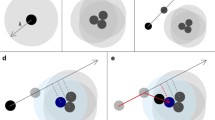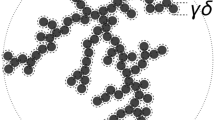Abstract
We investigated the cohesion of agglomerates formed by sticking two fractal clusters, each cluster having been previously generated by particle aggregation on a 3D lattice. The degree of cohesion of an agglomerate of a given configuration was defined by the number of connections simultaneously established on the two stuck clusters. All the possible nonoverlapping configurations were investigated and the corresponding porosity and brittleness as well as the pore volume and connection frequencies were determined. The numerical study showed the greater internal cohesion of agglomerates issued from sticking of reaction-limited aggregation (RLA) clusters compared to that of diffusion-limited-aggregation (DLA) clusters. DLA and RLA agglomerates presented continuously decreasing pore volume frequency curves, the latter agglomerates being characterised by a greater frequency of large pores. Comparison with typical controlled fragmentation experiments showed the number of connections to be the prevailing factor in the cohesion of aggregates formed in aqueous suspensions under various conditions.
Similar content being viewed by others
Author information
Authors and Affiliations
Additional information
Received: 25 January 2001 Accepted: 16 May 2001
Rights and permissions
About this article
Cite this article
Tatek, Y., Pefferkorn, E. Structural and stability characteristics of agglomerated clusters. Colloid Polym Sci 279, 1183–1191 (2001). https://doi.org/10.1007/s003960100554
Issue Date:
DOI: https://doi.org/10.1007/s003960100554




